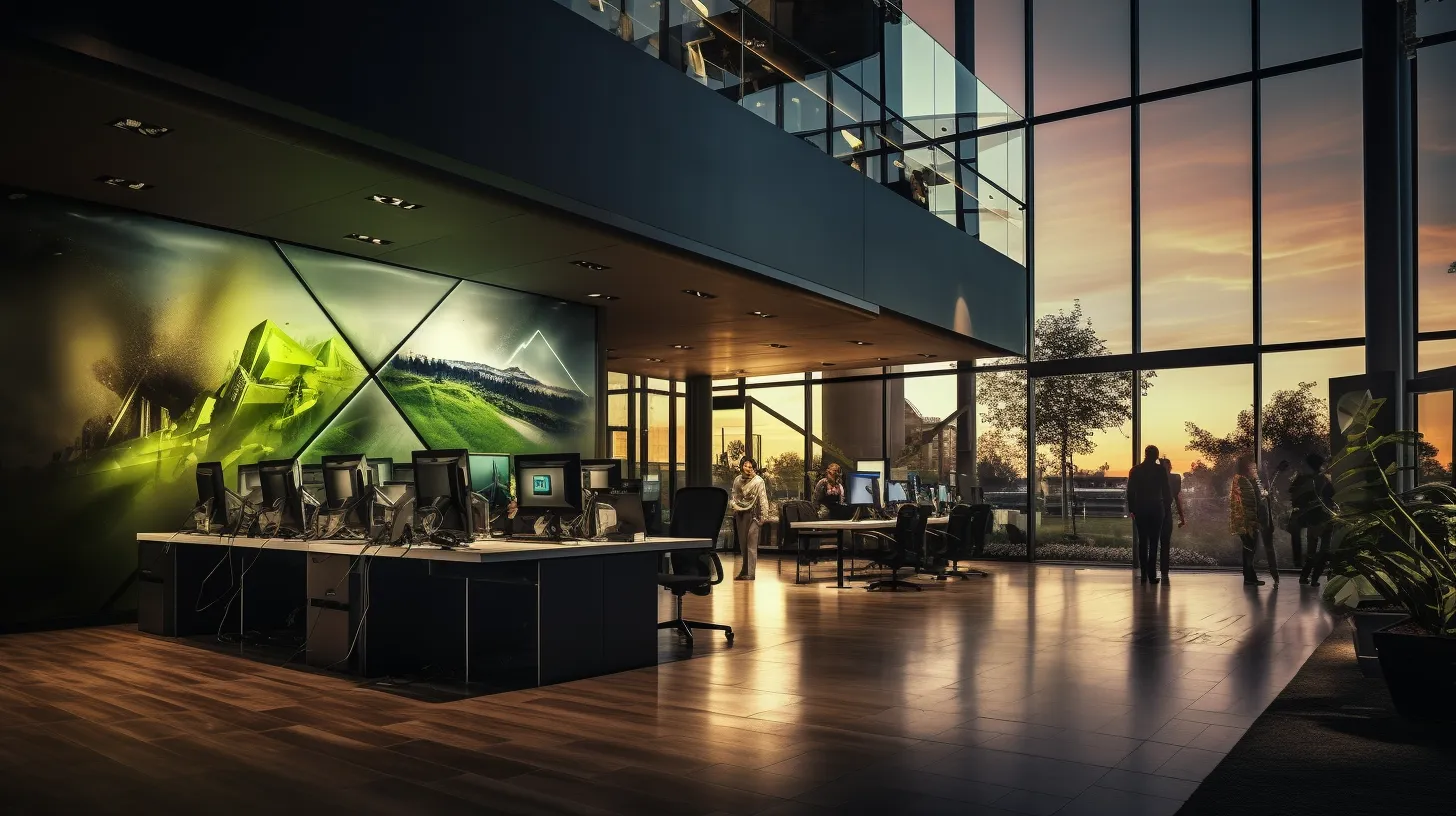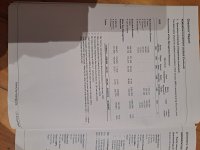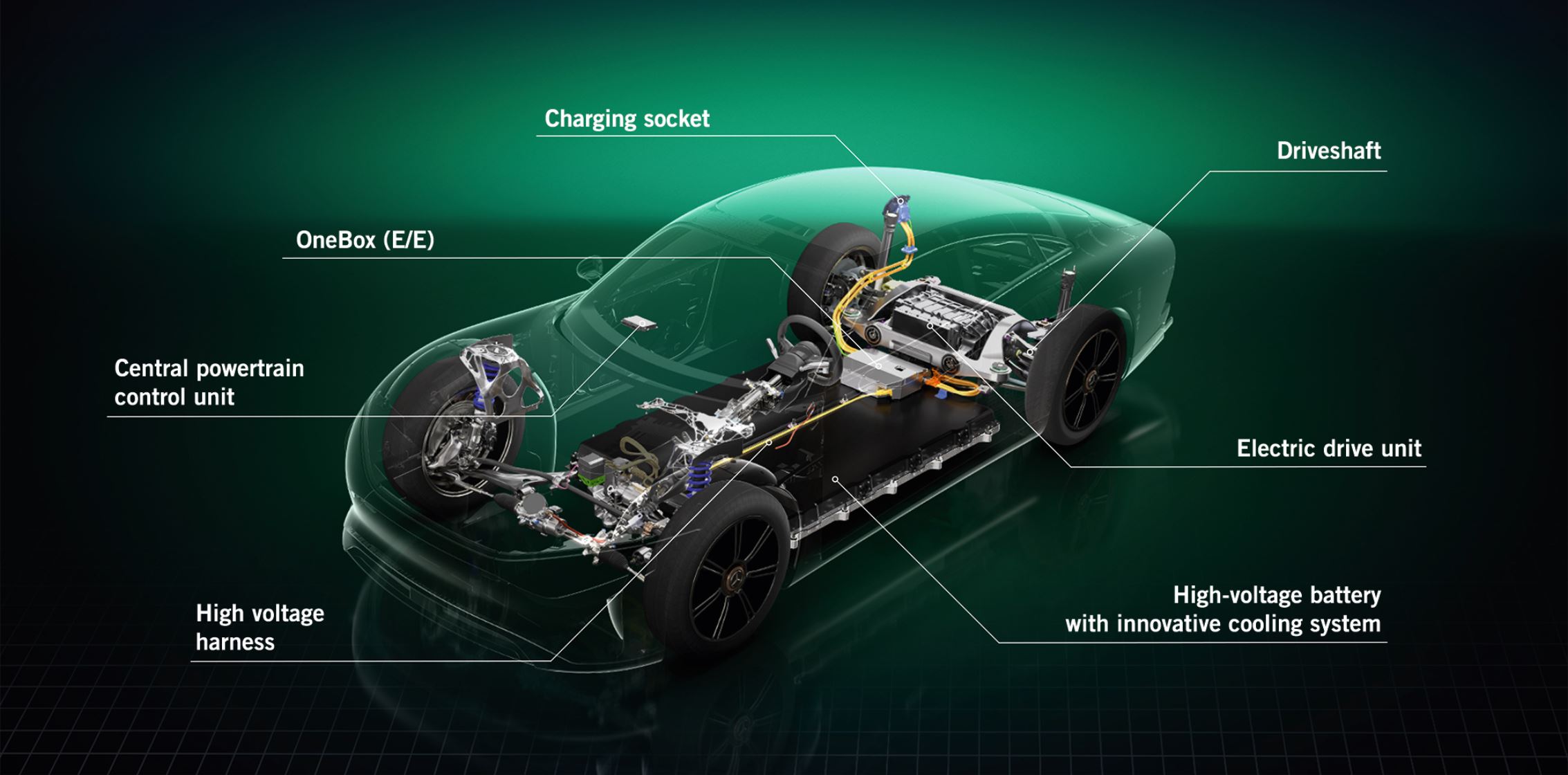You are using an out of date browser. It may not display this or other websites correctly.
You should upgrade or use an alternative browser.
You should upgrade or use an alternative browser.
BRN Discussion Ongoing
- Thread starter TechGirl
- Start date
You see that @Iseki. You're getting compared to a d ickhead now.
Humble Genius
Regular
A$3,375,000 to keep SP even.
Makeme 2020
Regular
Your No 1.May I remind you borat .You can put dickheads on ignore
HaHaHa
DingoBorat
Slim
BRN's business model and approach, has things in common, with both ARM's and NVIDIA's.What do I know? I'm just a farmer.
But here's a question for you.
Why do you want BRN to be modeled on Arm and not NVIDIA?
And a question for Sean.
If a client said to Sean: I'd like to get my hands on 1,000,000 Akida chips in 6 months time. What would the answer be?
You just have to be smart enough to ask questions.

Exploring Nvidia's Business Model and Revenue Streams | Untaylored
Dive into the intricate world of Nvidia's business model and revenue streams in this insightful article. | Business Model Innovation
"However, Nvidia's business model goes beyond just creating exceptional hardware. They recognize the importance of collaboration and partnerships. That's why they work closely with software developers and system integrators to optimize applications and solutions for their hardware. By fostering these relationships, Nvidia ensures that their GPUs and SoCs are not only powerful but also seamlessly integrated into various software ecosystems.
Moreover, Nvidia understands the value of building a strong ecosystem around their products. They actively cultivate relationships with game developers, content creators, and software vendors to ensure compatibility and optimization for their GPUs and SoCs. This collaborative approach creates a mutually beneficial environment where Nvidia's partners can leverage their technology to create groundbreaking experiences, while Nvidia benefits from increased brand loyalty and demand for their products"
I assume though, that you mean BrainChip's pursual of a mainly IP business model, which I personally like.
It's like owning a goldmine, where people pay you to mine there and then pay you royalties, with zero capital expenditure, or mining risks.
Both are very successful Companies and with what I know, that is happening with BrainChip and it's relationships with other Companies, I'm very happy, with the path they have chosen.
Am I happy with the speed at which things are going? Hell No.
Do I understand, this is the "nature of the beast" ? Yes.
And your question for Sean?
"If a client said to Sean: I'd like to get my hands on 1,000,000 Akida chips in 6 months time. What would the answer be?"
For starters it shows your ignorance, in following the Company you have invested in, as Sean has stated in an interview, that they are very flexible, in how they are dealing with their customers.
Do you really think, if a customer made such a request, that he would answer..
"Golly, No! You know we only do IP, you have to buy a licence and sort that out yourself".
Or would he say something more along the lines of..
"Sure, we can arrange that for you, through either TSMC, Global Foundries or Intel Foundry Services, here are the payment terms".
Which are likely to be "money down".
You need to be smart enough, to know when your questions are..
Not so much..
Chippers ,
Well after much deliberation, several beers , I would de thinking that a AKIDA CHIP , × three for redundancy, are in space at different altitudes.
1. University of Thrace, NATO comms. Some time ago and no doubt ongoing.
2. NASA , Ames...
3. ESA
4, & let's not forget ANT61.
5. Pick a US gov division....
Space force,
CIA ,
Army,
Navy,
Airforce,
Pentagon....
But once again would be nice if thay picked up the bill.
Space view.
Regards ,
Esq.
Well after much deliberation, several beers , I would de thinking that a AKIDA CHIP , × three for redundancy, are in space at different altitudes.
1. University of Thrace, NATO comms. Some time ago and no doubt ongoing.
2. NASA , Ames...
3. ESA
4, & let's not forget ANT61.
5. Pick a US gov division....
Space force,
CIA ,
Army,
Navy,
Airforce,
Pentagon....
But once again would be nice if thay picked up the bill.
Space view.
Regards ,
Esq.
Frank Zappa
Regular
Chippers ,
Well after much deliberation, several beers , I would de thinking that a AKIDA CHIP , × three for redundancy, are in space at different altitudes.
1. University of Thrace, NATO comms. Some time ago and no doubt ongoing.
2. NASA , Ames...
3. ESA
4, & let's not forget ANT61.
5. Pick a US gov division....
Space force,
CIA ,
Army,
Navy,
Airforce,
Pentagon....
But once again would be nice if thay picked up the bill.
Space view.
Regards ,
Esq.
Hi Esq . Having a night on the turps mate . Early celebration
My bet is cicra $200k..and trust me, I'm an lth and a believer...I want the board to shoot straight, tell us where we are for better or for worse. No more podcasts. Sean..ya year us lthers? HELLOOO?Hey everyone! Any thoughts on what Income figure for this quarterly report next week would be enough to keep the SP even, and what would be enough to see it rise?
Thank you
Kachoo
Regular
That about my range 200k to 500k this would be very positive it means new money has come and is coming. Not sure how one see 3.75 million we would need an IP deal or 2 for that number. Then again the real money is in the royalty payment not the one off payment. One will have to see.My bet is cicra $200k..and trust me, I'm an lth and a believer...I want the board to shoot straight, tell us where we are for better or for worse. No more podcasts. Sean..ya year us lthers? HELLOOO?
I'm surprised they did not do a Friday after close release likely a Monday AM or a Tuesday AM They must be still counting the deposits lol wonder if this is the delay lol.
In Biotech bad news are always given Friday after close in the naive hope it's all forgotten Monday morning (It isn't).That about my range 200k to 500k this would be very positive it means new money has come and is coming. Not sure how one see 3.75 million we would need an IP deal or 2 for that number. Then again the real money is in the royalty payment not the one off payment. One will have to see.
I'm surprised they did not do a Friday after close release likely a Monday AM or a Tuesday AM They must be still counting the deposits lol wonder if this is the delay lol.
Good news any day except Friday and generally AM.
Yes let's hope we will see some good income, anything over a mill would be awesome but I have my doubts like many others.
cosors
👀
Here is another study. It's too long, so follow the link.This huge study from multiple institutions released 4/4/24 appears to focused on Akida. Enjoy
"arXiv:2404.15312v1 [eess.SP] 02 Apr 2024
Realtime Person Identification via Gait Analysis
Shanmuga Venkatachalam ECE Department
Carnegie Mellon University
shanmugv@andrew.cmu.edu Harideep Nair ECE Department
Carnegie Mellon University
hpnair@andrew.cmu.edu Prabhu Vellaisamy ECE Department
Carnegie Mellon University
pvellais@andrew.cmu.edu Yongqi Zhou {@IEEEauthorhalign} Ziad Youssfi ECE Department
Carnegie Mellon University
yongqiz2@andrew.cmu.edu ECE Department
Carnegie Mellon University
zyoussfi@andrew.cmu.edu John Paul Shen ECE Department
Carnegie Mellon University
jpshen@andrew.cmu.edu
Abstract
Each person has a unique gait, i.e., walking style, that can be used as a biometric for personal identification. Recent works have demonstrated effective gait recognition using deep neural networks, however most of these works predominantly focus on classification accuracy rather than model efficiency. In order to perform gait recognition using wearable devices on the edge, it is imperative to develop highly efficient low-power models that can be deployed on to small form-factor devices such as microcontrollers. In this paper, we propose a small CNN model with 4 layers that is very amenable for edge AI deployment and realtime gait recognition. This model was trained on a public gait dataset with 20 classes augmented with data collected by the authors, aggregating to 24 classes in total. Our model achieves 96.7% accuracy and consumes only 5KB RAM with an inferencing time of 70 ms and 125mW power, while running continuous inference on Arduino Nano 33 BLE Sense. We successfully demonstrated realtime identification of the authors with the model running on Arduino, thus underscoring the efficacy and providing a proof of feasiblity for deployment in practical systems in near future.Index Terms:
Human Gait, Biometric Identification, Inertial Sensors, Arduino, Neuromorphic Akida, Edge AII Introduction
In the field of biometric identification, traditional methods such as fingerprint, facial recognition dominate. However, gait analysis is fast emerging as a unique and promising approach for identifying a person. Gait, the distinctive way an individual walks, carries inherent characteristics that can be leveraged for accurate non-intrusive person identification [1, 2]. Unlike static biometrics, such as fingerprints and facial features, gait analysis taps into the dynamic and behavioral aspects of an individual’s movement. Every person has a distinct gait, influenced by factors like anatomy, musculoskeletal structure, and personal habits. This distinctiveness makes gait analysis an intriguing and effective tool for identifying individuals in diverse settings, ranging from surveillance and security to healthcare and rehabilitation.
For this course project (Figure 1), we experimented on using light-weight convolutional neural network (CNN) models for edge-based gait detection for person identification. We perform pre-processing of the raw gait signals and model the CNN on the Edge Impulse framework. We use a popular gait dataset and further augment it with raw data collected from our team to train and test our model. We deploy our model on an Arduino Nano BLE 33 board for live inference and demonstration. We demonstrate highly accurate gait detection through our results and performed a live demonstration to show its efficacy. Further, we also deploy on smartphone.
Finally, we convert our CNN model to its event-based spiking neural network (SNN) equivalent via Brainchip MetaTF framework and deploy the SNN to the Brainchip Akida processor [3]. We obtain real-time power and latency measurements.
Figure 1: Overall Framework
II Methods
This section details the methods and experimental setup undertaken for this work. First, the dataset including our custom data collection procedure is described, followed by the edge inferencing pipeline, and finally our training methodology.
II-A Dataset
We use whuGAIT dataset [4]. A total of 118 subjects participated in the data collection process. Within this group, 20 subjects gathered data over a span of two days, generating thousands of samples each. Simultaneously, 98 subjects undertook a more concise data collection, spanning one day and resulting in hundreds of samples each. Each data sample comprises both 3-axis accelerometer and 3-axis gyroscope data, all recorded at a uniform sampling rate of 50 Hz.
Figure 2: Raw data example from each of the 20 classes
...
III-C Deploy on BrainChip Akida
As a third alternative, we convert the trained CNN to an equivalent SNN using BrainChip MetaTF and assess inference metrics on remotely accessible BrainChip Akida processors (physically located in CMU’s Silicon Valley campus). As shown in Figure 15, the converted SNN mapped to BrainChip Akida processor consumes about 880 mW with an average framerate of 22.73 fps. The inference energy consumed is 45.92 mJ/frame. This is only a preliminary analysis that needs deeper investigation for power and energy optimization.
...
V Conclusion
Our work serves as a feasibility proof for deployment of very efficient yet highly effective lightweight models on to small form factor edge devices such as Arduino, smartphone, etc. to identify person using their gait. Our model trained on a standard dataset augmented with the team members’ gait data is able to achieve 96% accuracy on 24 classes, while consuming only 70 ms inferencing time, 5 KB RAM, and 125 mW power. Further, our work serves as a first step towards deploying a gait recognition model on a neuromorphic device such as BrainChip Akida. Future investigation will focus heavily on optimizing the model, adding data for physically challenged as well as multiple other people for diversification and bias reduction, and optimizing the neuromorphic model."
https://arxiv.org/html/2404.15312v1
___________
This use case is absolutely new to me. Exciting stuff!
Last edited:
Space Cadet
Regular
Chippers ,
Well after much deliberation, several beers , I would de thinking that a AKIDA CHIP , × three for redundancy, are in space at different altitudes.
1. University of Thrace, NATO comms. Some time ago and no doubt ongoing.
2. NASA , Ames...
3. ESA
4, & let's not forget ANT61.
5. Pick a US gov division....
Space force,
CIA ,
Army,
Navy,
Airforce,
Pentagon....
But once again would be nice if thay picked up the bill.
Space view.
Regards ,
Esq.
Tou missed a couple
https://www.intelligence.senate.gov/resources
Evening Kachoo & Fellow Chippers ,That about my range 200k to 500k this would be very positive it means new money has come and is coming. Not sure how one see 3.75 million we would need an IP deal or 2 for that number. Then again the real money is in the royalty payment not the one off payment. One will have to see.
I'm surprised they did not do a Friday after close release likely a Monday AM or a Tuesday AM They must be still counting the deposits lol wonder if this is the delay lol.
Three photos from our latest Annual Report.
1st ...page 49 , 12. Trade Receivables... atleast $60k ...possibly $2,422,006.
2. Renumeration Report, two photos ..2022 & 2023.
* Note . S.Hehir has over the last two years extracted ...with permission from the board...$6,243,766.00 USD = AU $ 9,557,275 from our company.
Just the key Management, 8 individuals , have extracted ....$14,358,420.00 USD = AU $21,978,308.00 in the last two years alone.
Exchange rate as of 26/4/2024... you get the gist.
Truely been a printing press, for a few.
Personally, think only Anil & Peter are worth their weight.
Photos from the Ann Report.
And NO , I'm not trying to create a shite storm , purely laying the figures out.
Regards
Esq.
Attachments
Evermont
Stealth Mode
Has anyone read the content here?
01-05-2024 | Development
Published in: MTZ worldwide | Issue 5/2024
01-05-2024 | Development
Vision EQXX - With Digital Tools on the Road in 18 Months
Authors: Laura Vranos, Florian Fröhlich, Daniel Schindler, Julien PillasPublished in: MTZ worldwide | Issue 5/2024
Tell us what you have seen behind the pay wallHas anyone read the content here?
01-05-2024 | Development
Vision EQXX - With Digital Tools on the Road in 18 Months
Authors: Laura Vranos, Florian Fröhlich, Daniel Schindler, Julien Pillas
Published in: MTZ worldwide | Issue 5/2024
CHIPS
Regular
Sean and his team are sitting safe in front of their laptop or holding their smartphones watching TSE Forum and thinking “ok… they are really tough…let’s make them rich
Yes please!!!
Similar threads
- Replies
- 0
- Views
- 4K
- Replies
- 8
- Views
- 5K
- Replies
- 0
- Views
- 3K




